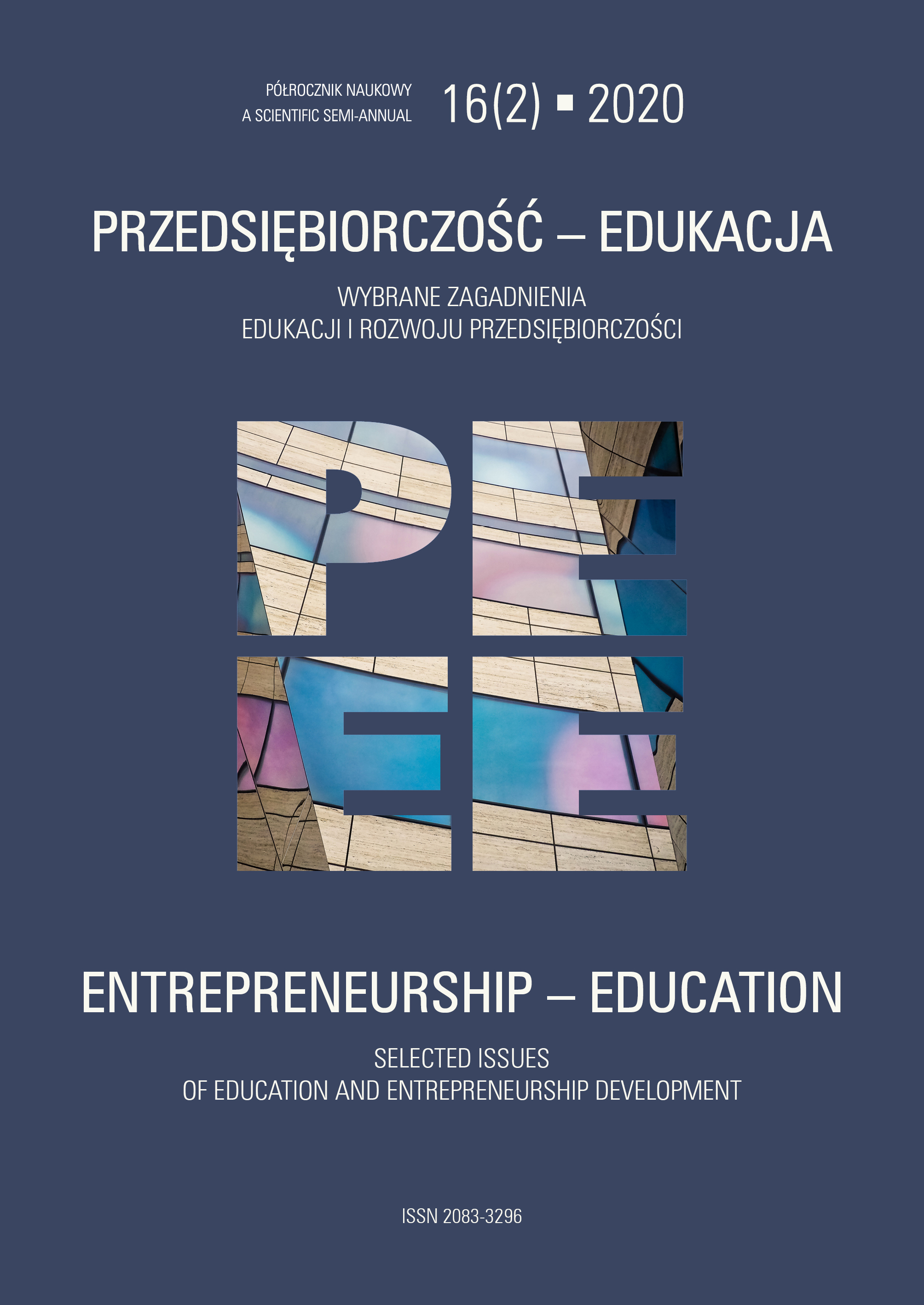Post-Camaldolese Monastery Complex Złoty Las Hermitage in Rytwiany – an Innovative Centre of Tourism Services Sector in the Świętokrzyskie Voivodeship (Poland)
DOI:
https://doi.org/10.24917/20833296.162.23Keywords:
Camaldolese, entrepreneurship, pilgrimages, Post-Camaldolese Monastery Complex Złoty Las Hermitage in Rytwiany, religious tourismAbstract
One of the new trends in the religious tourism worldwide have been the holiday stays in monasteries, hermitages and retreat houses. The so-called holidays in monasteries are dedicated for people with civilisation addictions and those looking for peace and quiet as well as rest from everyday duties.
In Poland, such places include e.g. the Post-Camaldolese Monastery Complex Złoty Las Hermitage in Rytwiany, dubbed the sanctuary of silence. The studies enabled to name the major success drivers of the continuous development of the Złoty Las Hermitage in Rytwiany and the growing tourist traffic in this centre. They include, first and foremost,
* the historical, cultural and architectural values of the Post-Camaldolese Monastery Complex,
* the religious heritage of the centre and the monastic spirituality, inherited from Camaldolese hermits here,
* the pastoral attitude and entrepreneurship of the Hermitage Director, canon priest Wiesław Kowalewski, an effective and efficient leader, his personal traits as well as the skills and reliability of cooperation with the inner community and the neighbourhood,
* rich and unique therapeutic offer of the Relaxation and Contemplation Therapy Centre “Złoty Las Hermitage” SpeS (Salus per silentium),
* professional staff serving the pilgrims’ and tourists’ traffic,
* centre promotion in mass media,
* looking for and introducing new ideas, solutions and projects, meaning innovation and expansion,
* growing popularity of “holidays in monasteries”.
References
Curyło, K., Kowalewski, W. (red.). (2017). Pustelnia Złotego Lasu w Rytwianach. 1617–2017. Przewodnik jubileuszowy. Rytwiany: Wydawnictwo Diecezjalne i Drukarnia w Sandomierzu.
Griffiths, M.D. (2011). Workaholism: A 21st century addiction. The Psychologist: Bulletin of the British Psychological Society, 24, 740–744.
Hiżycki, Sz. (2018). Milczenie w regułach monastycznych. W: R. Bednarczuk, M. Rokosz (red.), Fenomen milczenia w kulturze i języku. Materiały interdyscyplinarnego sympozjum poświęconego pamięci profesor Jolanty Rokoszowej zorganizowanego przez Wydział Filologiczny PAU. Kraków: Wydawnictwo Polskiej Akademii Umiejętności, 15–24.
Kośka, M. (2016). Dekret abpa Franciszka Skarbka-Malczewskiego z 17 IV 1819 r. w sprawie supresji klasztorów w Królestwie Polskim. Hereditas Monasteriorum, 8, 367–378.
Kowalewski, W. (2006). Przedmowa. W: W. Kowalewski (red.), Rytwiany. Pustelnia Złotego Lasu. Sandomierz: Wydawnictwo Diecezjalne i Drukarnia w Sandomierzu.
Kowalewski, W., Curyło, K., Jelonek, B. (red.). (2017). 400 lat Pustelni Złotego Lasu w Rytwianach. Rytwiany.
Małkowicz, A. (2005). Twórczość malarza-kameduły o. Wenantego z Subiaco w świetle najnowszych badań. Folia Historica Cracoviensia, 11, 117–132.
Mróz, F. (2019). Changes in religious tourism in Poland at the beginning of the 21st century. Turyzm, 29(2), 95–103.
Mróz, F. (2010). Geneza i funkcjonowanie sanktuariów Pańskich w Polsce w okresie odnowy potrydenckiej (XVI–XVIII w.). Peregrinus Cracoviensis, 21, 15–42.
Mróz, F., Mróz, Ł. (2013). Nowe trendy w turystyce religijnej. W: R. Pawlusiński (red.), Współczesne uwarunkowania i problemy rozwoju turystyki. Kraków: Instytut Geografii i Gospodarki Przestrzennej UJ, 105–119.
Pałęcki, W. J. (2012). Służba Boża kamedułów polskich. Tradycje życia pustelniczego w świetle potrydenckiej liturgii rzymskiej (1605–1963). Lublin: Wydawnictwo KUL.
Powidaj, L. (1881). Rytwiany i ich dziedzice. Kraków: Czcionkami Drukarni „Czasu”.
Reguła św. Benedykta i Konstytucye Zgromadzenia Kamedułów-Pustelników Góry Koronnej przejrzane i potwierdzone przez Ojca św. Klemensa IX: podług wydania włoskiego w Rzymie R. P. 1670 przetłómaczone na język polski R. P. 1912. (1912). Kraków: Nakładem oo. Kamedułów na Bielanach.
Siek, W. (1918). Opis historyczny miasta i parafii Staszów. Radom.
Urbanowicz, W. (1952). Malowidła Venantego da Subiaco w Rytwianach. (Z zagadnień związków architektury, rzeźby i malarstwa w sztuce polskiego Renesansu). Przegląd Artystyczny, 6, 29–39.
Zarewicz, L. (1871). Zakon kamedułów, jego fundacje i dziejowe wspomnienie w Polsce i Litwie. Oprac. według źródeł rękopiśmiennych archiwum OO. Kamedułów w Bielanach koło Krakowa. Kraków.
Zioło, Z. (2016). Przedsiębiorczość w rozwoju układów lokalnych. Przedsiębiorczość – Edukacja [Entrepreneurship – Education], 12, 6–17.
Zub, J. (1998). Rytwiany. Pustelnia kamedulska. Przewodnik po zabytkach sztuki. Tarnobrzeg: Wydawnictwo „Profil s.c.”
Downloads
Published
How to Cite
Issue
Section
License
Articles are published under the terms of the Creative Commons License (CC BY-ND 4.0; Attribution– NoDerivs).

